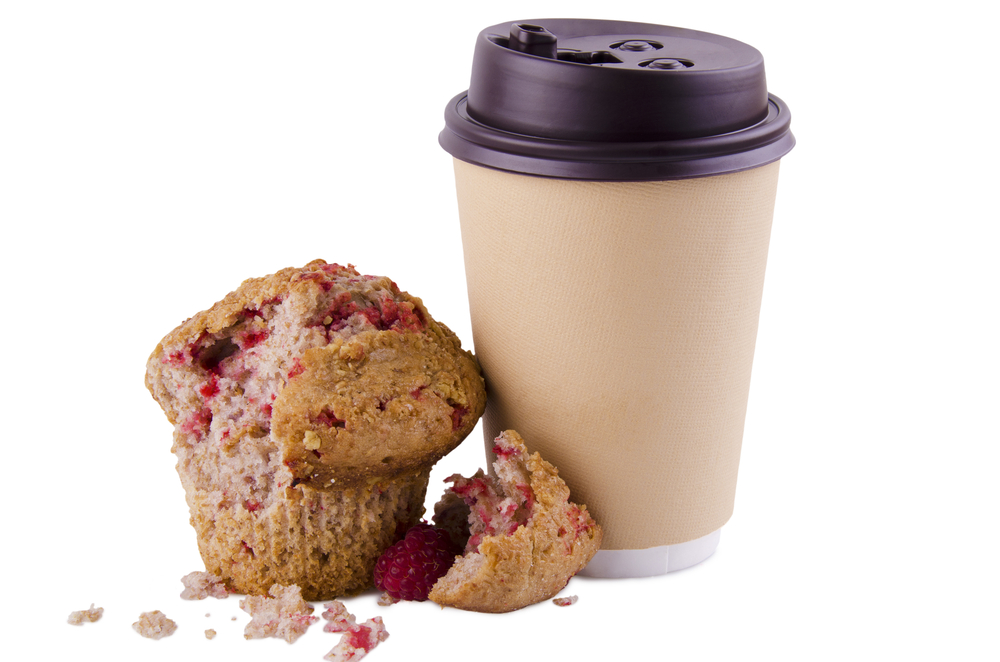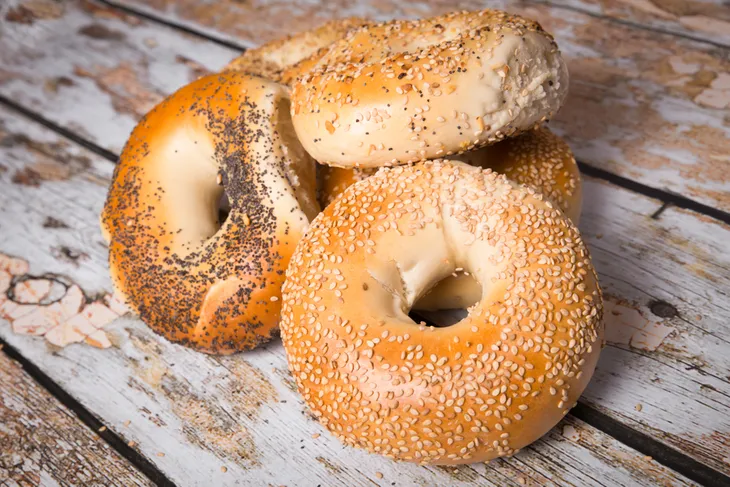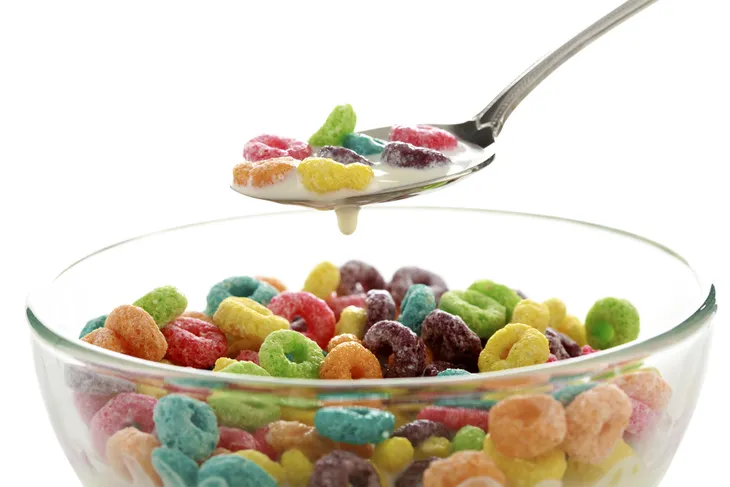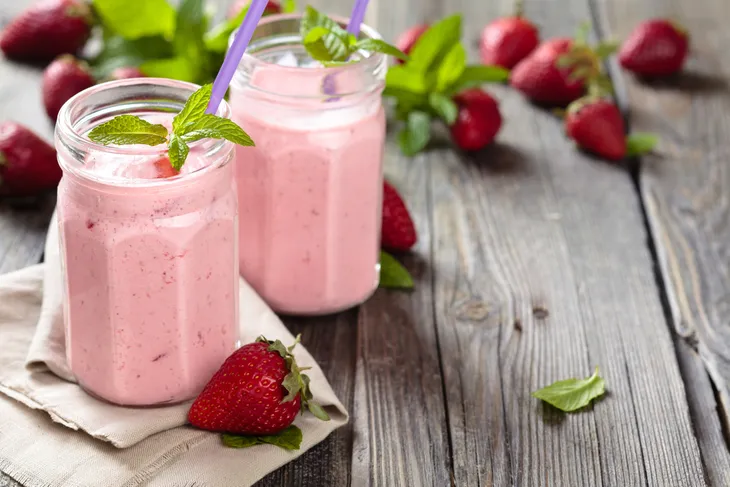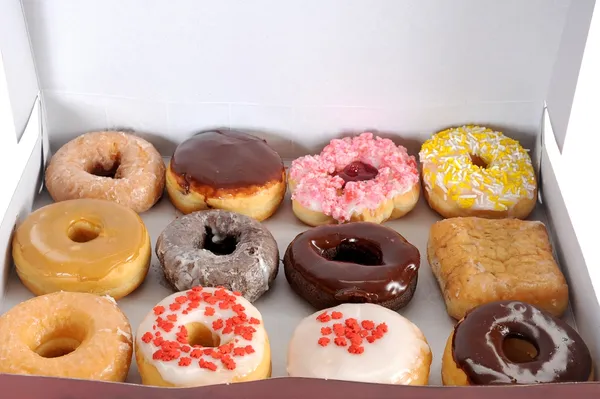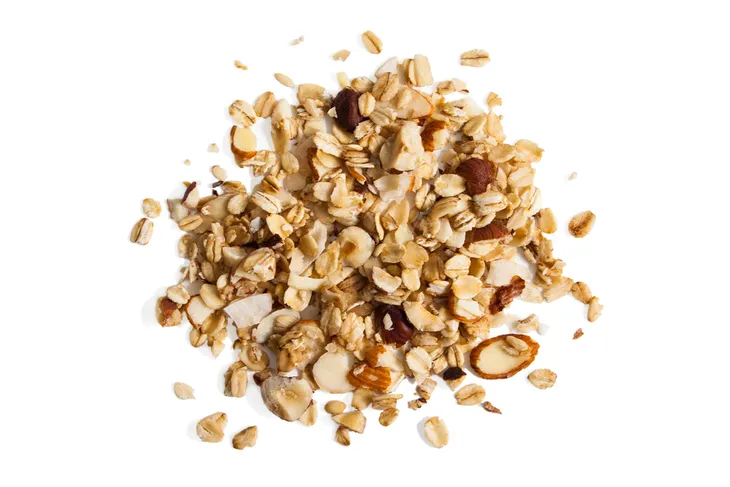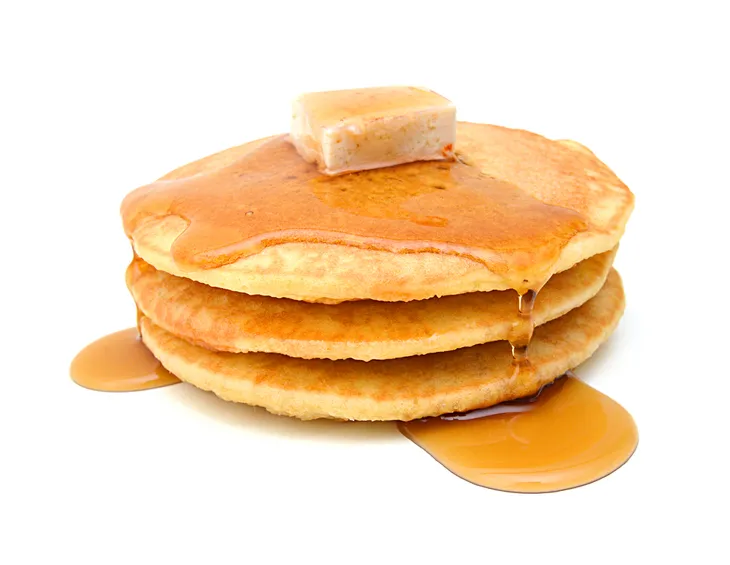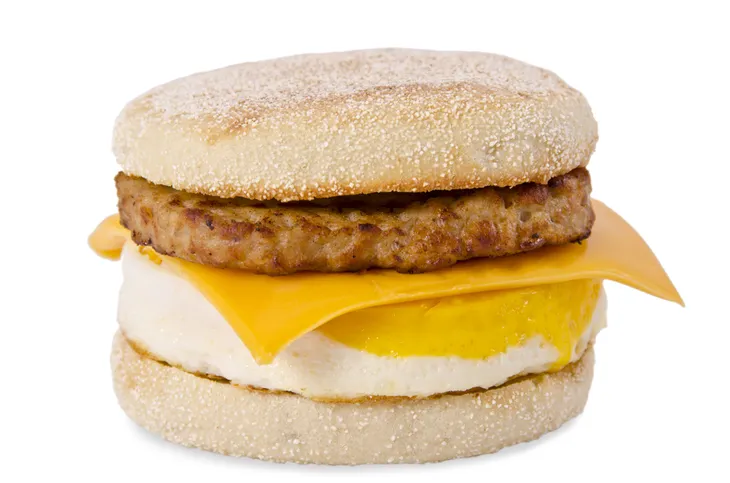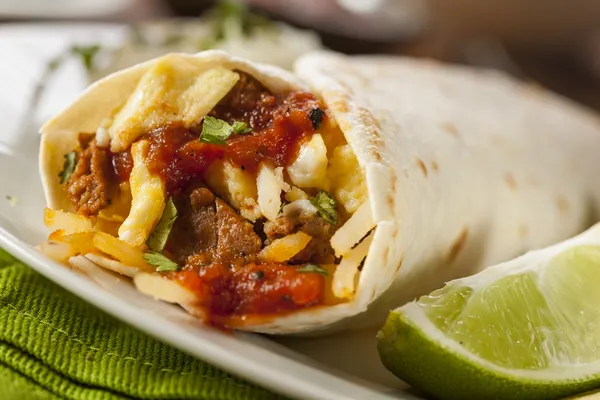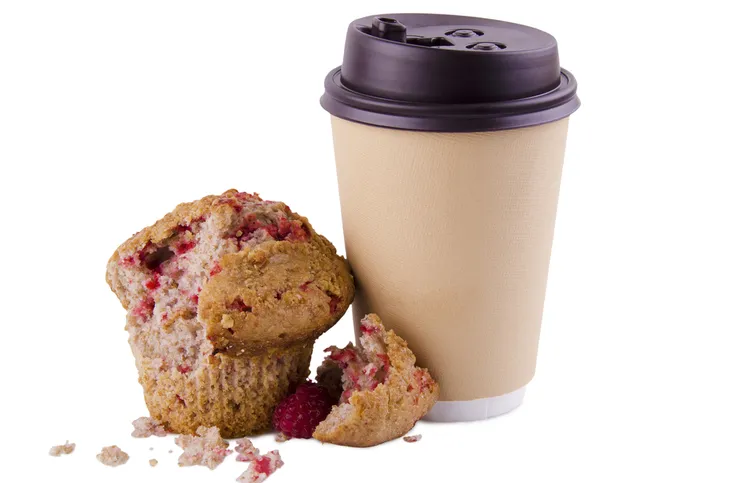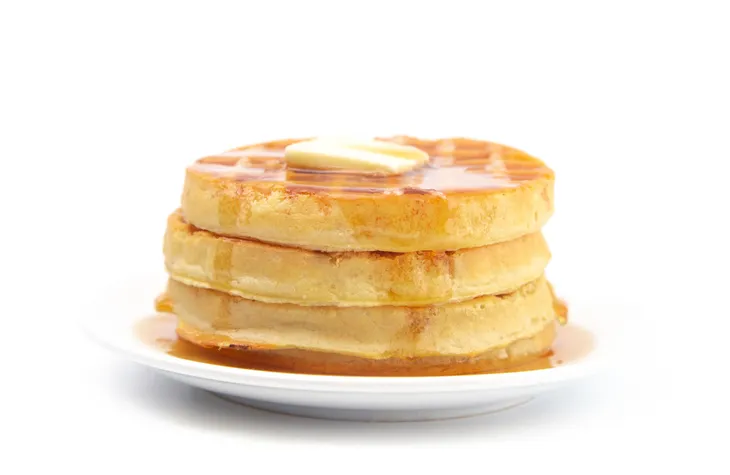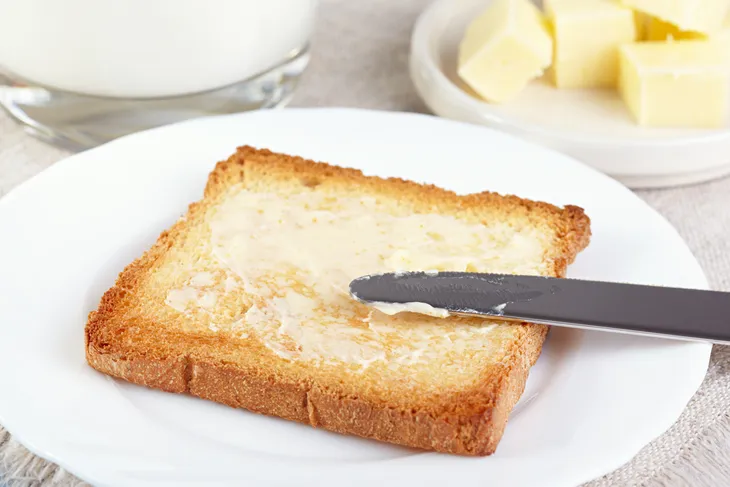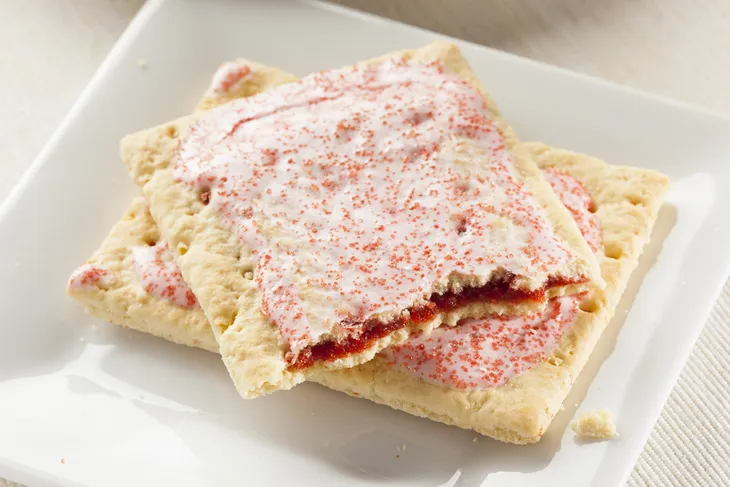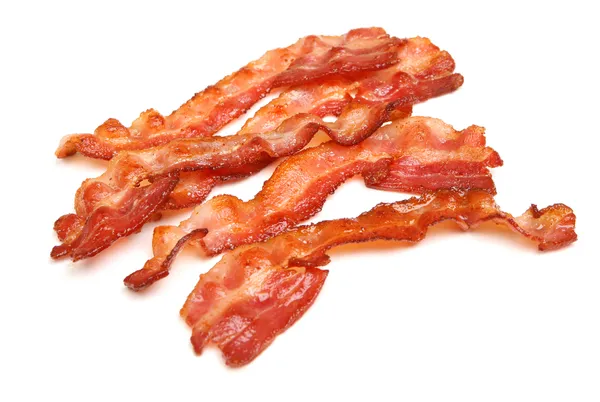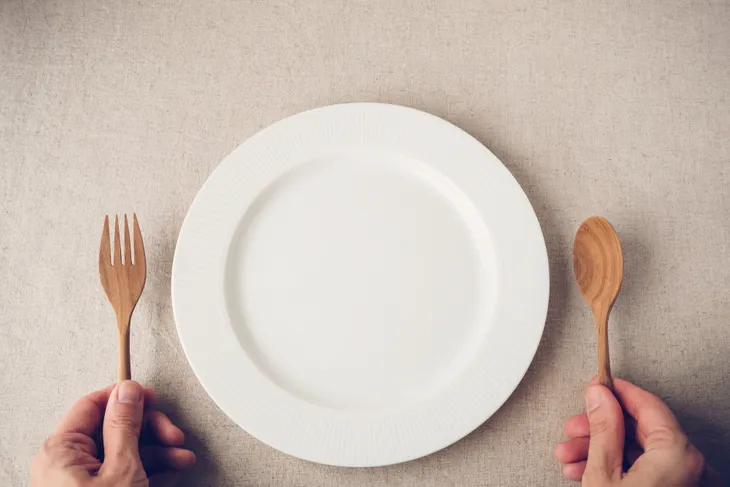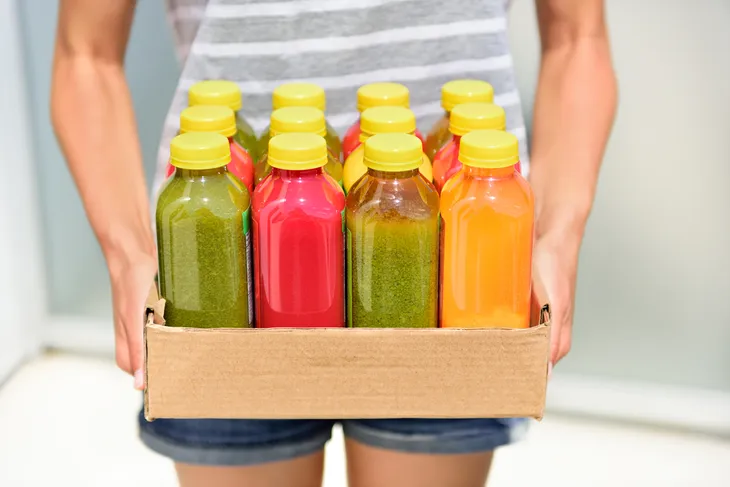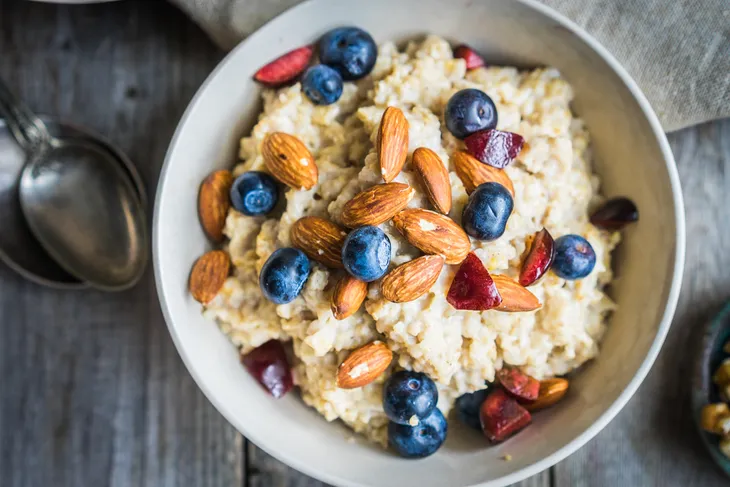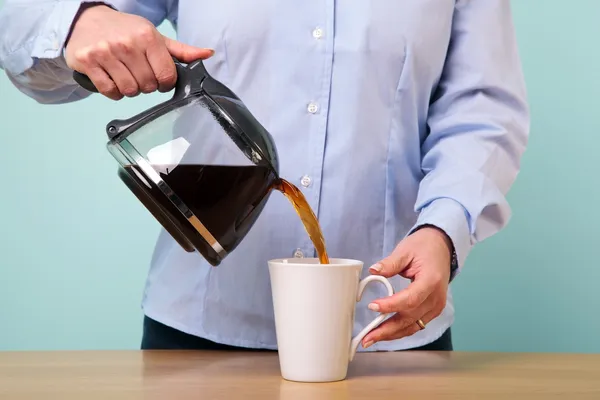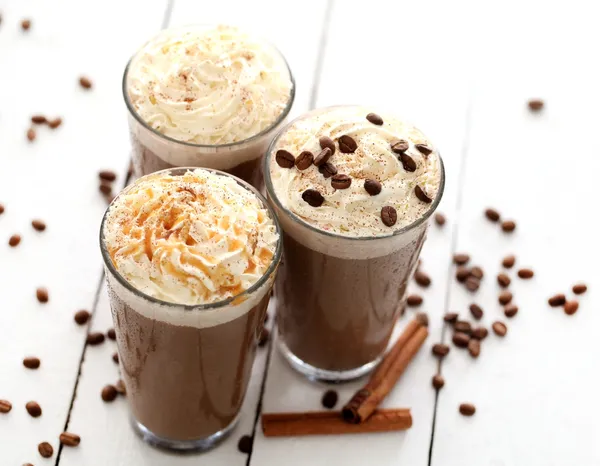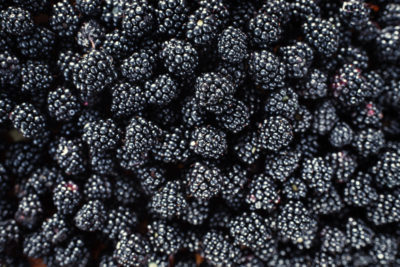You’ve heard that breakfast is the most important meal of the day. And there’s a reason for following that wise piece of advice. Food research shows that starting your day with a healthy breakfast will aid weight loss goals by curbing mid-afternoon snack attacks and binge eating.
However, that doesn’t mean you should fill your gullet with a mess of sugar-filled cereals or toaster treats first thing in the morning. The key to a healthy breakfast is a combination of complex carbohydrates, lean protein, low fat dairy, and fresh fruits. In other words, the following 20 foods will only provide an overload of sugar, empty carbohydrates and calories, and a lack of essential vitamins that will leave you fatigued and craving sugar by mid-day. So steer clear of these breakfast foods to start your day…
Bagel with Cream Cheese
If you’re getting your bagel and cream cheese on the go, you’re probably not getting a calorie-conscious, whole grain bagel with reduced fat cream cheese. Whole grain is made up of all the essential parts of the entire and original buckwheat, spelt, kamut, bulger, barley, millet, corn, oat, amaranth, grain, or rye gain. This means it hasn’t been cracked, crushed, rolled, or extruded.
However, if like many, you crave a toasted bagel in the morning, you can easily cut the calories in half by toasting and smearing your own whole grain bagel at home. Or better yet, skip the high caloric and fatty cream cheese and use low fat cottage cheese or natural nut butter instead. Raw nut butters like almond, peanut, macadamia, and soy butter are all tasty and melt nicely onto a bagel.
Supermarket Boxed Cereals
Fruit Loops and Cocoa Puffs, these store-bought cereals are meant to appeal to the sweet teeth of big and little kids as they wander the grocery aisles. Most of these processed cereals are jam-packed with sugar and will only lead to an energy crash. Plus, the recommended serving size of ¼-cup will never satiate your appetite. You’re bound to consume double or triple the amount of empty calories and sugar in your bowl. “Some cereals are full of carbohydrates and sugar,” says Jean LaMantia, registered dietitian and author of the Essential Cancer Treatment and Nutrition Guide Cookbook to Best Health.
A cereal is considered healthy when its made up of good nutrition–including a high source of fiber and protein, packed with essential vitamins and minerals, and low in refined sugars, sodium, and Trans fats. Look for a cereal that’s high in whole grains (i.e., oats, barley, spelt, kamut, and quinoa) as well as heart-healthy fats (i.e., raw nuts and seeds), and natural sugars (i.e., raw honey or real maple syrup) as a healthy way start to your day.
Breakfast Smoothie
Do you ever wonder why breakfast smoothies are so sweet? Well, because they are full of refined sugar—that’s why. Most store-bought varieties contain full fat milk, or worse, cream or (gasp) ice cream, so it’s really more of a dessert shake than a breakfast beverage. Instead of buying your smoothie at the local café, blend a healthy version up at home using Greek yogurt, unsweetened almond or skim milk, and fresh or frozen fruit.
I like to use my smoothie as a great and sneaky way to also add greens to my morning meal. I always throw a handful of mixed greens (i.e., like baby spinach or pea sprouts) into my blender along with my fruit and almond milk in order to ensure a added source of natural vitamins and nutrients. It’s like an added health boost in the morning.
Donuts
It doesn’t matter if the donut is jam-filled, sugar-coated, or honey-glazed, they are full of fat and sugar, and will hardly satisfy anything other than a sweet tooth. An average old cake donut contains about 6-grams of fat and 250-calories. While the average apple fritter or cream-filled goodie contains at least 9-grams of fat and over 300-calories—and one is hardly enough to get you through until lunch. “Not only are these made with refined white flour, but there’s sugar added,” says LaMantia to Best Health. Sugar is the worst thing to consume in the morning as fuel for the rest of the day.
Luckily, you can still satisfy a sweet tooth with a toasted bagel, pita, or English muffin depending how you spread it and size/amount consumed. When I’m craving something sweet and creamy, I opt for raw almond butter and sliced banana as my topper. I’ve also used sliced and baked apples with a sprinkle of cinnamon and a touch of maple syrup.
Breakfast Scones
Breakfast scones are all goodness and love—particularly if grandma makes them, right? Wrong! These sugar- and butter-filled breakfast landmines might be harmless looking, but they are all fat, empty calories, and sugar with absolutely no fiber or quality protein. No, not even if you eat yours with clotted cream.
Luckily, you don’t have to totally forgo your breakfast baked good. You can make your own scones at home using quick-cooking oatmeal or quinoa flour, both whole grain options. Or if you prefer store bought, opt for whole grain English muffins or crumpets and smear a little fresh fruit preserve (made with no artificial sweeteners) or raw almond butter onto your morning toasty.
Store-Bought Granola
Sure, it looks like a health mixture of honey, brown sugar, oats, and dried fruit, but think again. Most store-bought boxes of granola contain up to 10 grams of fat and 400 calories per serving, which outweighs a glazed donut. Many boxed granolas contain a whole whack of hidden sugar, unless you’re reading labels and consciously buying an organic or natural variety made with simple sugars, or making your own at home. Otherwise, you’re basically eating dessert for breakfast!
The good news is that DIY granola is typically a lot healthier and a lot cheaper on the wallet. Mix your own by combining whole grain oats, raw nuts, organic dried fruit and seeds, dried spices (i.e., cinnamon and nutmeg), and a touch of natural sweetness (i.e., real maple syrup or raw honey). I like to make my own for the week and then bring a large container to work so breakfast is waiting for me at my desk when I arrive each morning.
Pancakes and Sausage
The emerging waffle house or pancake house trend across the U.S. is filling us full of empty carbs, sugar, and fat, particularly when you consider what’s in those processed breakfast sausages. Prepared griddle style and swimming in corn syrup (not real maple syrup), the average pancake and sausage breakfast weighs in at 800 empty calories. Choosing a natural maple syrup is better, but it still doesn’t make up for the fact that a pancake is made from refined flour. Artificial syrup is made with high-fructose corn syrup which is also a main ingredient in most processed and packaged foods. “High fructose corn syrup can lead to more abdominal obesity and visceral fat-which is stored between the organs,” says registered dietitian Jean LaMantia to Best Health.
Luckily, homemade pancakes can be quick to make and lighter on the waistline. Mix up a pancake batter made with whole grain, multigrain, or quinoa flour, baking soda, baking powder, vanilla soy milk or almond milk, chopped nuts, applesauce, and an egg. Add some natural sweetness by adding sliced banana, golden raisins, maple syrup, and honey.
Take-Away Breakfast Sandwich
Sure, it has the makings of a balanced breakfast—with egg, meat, cheese, and toast—but when you really break down that breakfast sandwich or croissant, you’re getting a greasy fried egg, processed ham or bacon, full fat cheese, butter, and a biscuit with a bunch of super fast burning carbohydrates (which means that you’ll be hungry in a few hours) and no fiber whatsoever.
Instead of opting for the drive-thru quick breakfast sandwich, do your health a favour by making your own, healthier version at home. I start with a few slices of dark rye or oat bread, top with a poached egg or a sliced hard boiled egg, top with fresh avocado, tomato slices, and lean deli turkey, no need for butter!
Breakfast Burrito
Microwavable, munch-while-you-drive, appropriate breakfast burritos sure do seem convenient. However, most contain an entire day’s worth of saturated fat (look at all of that cheese, sour cream, and ground sausage or beef) regardless of the fact that you need more than one to satisfy your breakfast hunger. Did you really think there was any nutritional value to that massive tortilla stuffed with half a processed pig, full fat processed cheese, fatty egg substitute, and, yuck, hash browns?
However, making your own at home can save you money on drive through junk and junk in your trunk. Roll lean turkey slices, scrambled or sliced hard boiled egg, mashed avocado, homemade salsa, low fat cheese, and a dollop of plain Greek yogurt into a whole grain tortilla. Toast in your toaster oven for a few minutes until the contents melt, wrap in a napkin, and enjoy while you walk to work.
Café Jumbo Muffin
I say jumbo muffin because I’m referring to the fact that most store-bought muffins contain enough fat and calories to make up the size of 3 muffins. More cupcake than breakfast pastry, your average banana-walnut, carrot, or blueberry muffins is nothing more than a glorified snack cake, jam-packed with Trans fat oils, loads of refined sugars, sodium, and fruit filling that is more pie filling than real berries, bananas, or apples.
However, healthier muffins bake up in a jiffy. Make a batch and wrap them individually in cellophane to take to work all week long. Just make sure you’re using whole grain flours (i.e., oat, quinoa, spelt) as well as natural sugars (i.e., apple sauce, apple butter, honey, and real maple syrup), and heart healthy fats (i.e., mashed banana, avocado, and whole eggs) in your homemade muffin recipes.
Waffles
Waffles are an unhealthy choice for breakfast for the same reason as many of the other foods on this list. Because the are often made with refined flour, they lack nutrients, protein, and fiber. On top of that, they’re loaded with sugar and calories, especially when lathered in maple syrup. If a meal comes pre-made, frozen and packaged, it’s most likely not healthy.
We understand that the convenience of popping a frozen waffle in the toaster is amazing, but it’s not practical health-wise. This type of food will not keep you hungry throughout the day and will only cause sugar cravings later on. “Swap your sugary toppings for ones with more nutrition, such as Greek yogurt, cottage cheese, fresh fruit, or nut butters to boost the fiber and protein,” says Alexandra Oppenheimer Delvito, R.D., C.D.N. to Men’s Journal.
Toast and Butter
A simple piece of toast with some butter seems innocent enough. It’s also pretty boring, so what could possible be so bad about this? The problem is that while this breakfast meal is super easy and simple, it doesn’t do much to subside hunger because it doesn’t contain any protein. You’ll just be hungry again in an hour. You’d be better off to whip up a veggie omelette, in addition to a piece of whole grain toast with butter.
Toaster Pastries
This one shouldn’t come as a surprise because there are essentially no nutrients in these types of food. Men’s Health talked to Alexandra Oppenheimer Delvito, R.D., C.D.N., who says breakfast pastries lack fiber and protein and are packed with calories and sugar that will only cause hunger to return in an hour or so. You’ll never make it to lunch time.
Now we understand it’s not practical to expect every person to cut these foods out entirely. If that’s the case, treat these types of foods as what they are…a treat. You should only indulge in them once in a while. Don’t eat them every day. “If you’re going to have a pastry or donut, only have half,” says Delvito.
Bacon or Sausage
Bacon and sausage are staple breakfast foods, especially on the weekend when we have more time to cook up some eggs alongside them. While these two breakfast foods taste really good, they’re not good for us. The main reason is that they fall into the category of processed meat which can be harmful, says cardiologist Joel Kahn, MD, in The Holistic Heart Book.
Reader’s Digest cites Harvard research which found that “every 1.8-ounces of processed meat you eat raises your heart disease risk by 42-percent.” Not ready to give it up entirely? That’s fine. Eat this type of food on special occasions only, and treat it as if it were a condiment. It should only account for a very small portion of the plate.
No Breakfast At All
LiveStrong states that nearly a quarter of U.S. adults skip out on breakfast every day. You might think it’s smart to skip out on calories in the morning in order to eat more later in the day, but that’s not exactly how it works. The body needs protein, fiber, and nutrients, especially in the morning in order to fuel it through the day and to function properly. Not eating in the morning will cause mental fogginess, drowsiness, and an overall lack of energy. A lack of energy means there will be a lack of calories burned. Studies show that people who eat breakfast have more energy and burn more calories than those who don’t. Those who are skipping breakfast to lose weight are actually doing the opposite.
There are also studies that suggest not eating breakfast can actually lead to weight gain and develop health problems like diabetes and heart disease. LiveStrong cites a Harvard study which found that men who didn’t eat breakfast were 27-percent more likely to develop heart disease and women who didn’t eat breakfast had a 28-percent higher risk of developing type 2 diabetes.
Fruit Juice
Fruit juice can sometimes be misleading because it has the word “fruit” in it. Some brands will even advertise as being loaded with vitamin C and made with real fruit. In reality, most people aren’t lacking vitamin C (nor do they have trouble getting adequate amounts, so to choose a juice based on that isn’t necessary). Also even if they are made with real fruit, they are loaded with sugar.
Juice should definitely not be used as a replacement for a meal either. “It’s all carbs, all sugar, and you’re not balancing it out with other nutrients,” says Mitzi Dulan, RD, author of The Pinterest Diet to Reader’s Digest. You should even shy away from those so-called healthy cold-pressed juices, even if they contain healthy ingredients like kale or fruit. “These often don’t have enough protein, which will accelerate your hunger by mid-morning.” You’re better off grabbing a piece of fruit with some peanut butter.
Granola Bar
Even though some of these granola bars are advertised as a great source of fuel or even as a breakfast bar, they do not meet the requirements of a healthy, well-rounded breakfast. “Most are loaded with sugar and have little to no protein and fiber,” says Rania Batayneh, MPH, author of The One-One-One Diet to Reader’s Digest.
There are some healthy options available, it’ll just take some research. While at the grocery store, take the time to read labels. Reader’s Digest advises choosing a granola bar that contains less than 5-grams of sugar and at least 5-grams of protein.
Pre-Mixed Oatmeal
Pre-mixed oatmeals are super popular because oatmeal is often touted as a healthy breakfast food and they’re super easy to make with little to no preparation. They come in all kinds of different flavors and taste delicious. Unfortunately, anything that seems to good to be true, probably is! Most of these pre-mixed flavored oatmeals are equal to a bowl of unhealthy, sugary cereal.
A healthy breakfast would be a bowl of steel-cut or rolled oats, not instant oats. Steel cut and rolled oats take longer to make, but they are much healthier. Instant oats are the white bread of oatmeal. They are processed and low in fiber, says Reader’s Digest. You should also eat oatmeal plan and spark some flavor by adding fruit, a sprinkle of cinnamon, or a small dollop of maple syrup. Don’t have time to make oatmeal in the morning? You can try overnight oats. Don’t like cold oatmeal? You can heat overnight oats in the microwave in the morning.
Just Coffee
A lot of people might think the less calories the better, but that’s not the case. Think of the human body like a machine, it needs fuel or energy to run properly. This is also how we should think of food which is why we’d want to feed it the best food possible. Just having a cup of coffee for breakfast is definitely not the best fuel we can give our body to start the day.
The biggest problem with this is that you’ll just be hungry in an hour or so which might cause a person to make rash decisions when it comes to what they’re eating for lunch or snacking before lunch. You don’t need to eliminate that cup of coffee, just add a proper breakfast to it. Something with lots of protein and even some veggies. If you’re one of those people who just can’t stomach food that early in the morning, you can always make a smoothie loaded with fruits, veggies, and a small scoop of protein powder, says Men’s Health.
Speciality Coffee Drinks
There’s a reason most speciality coffee drinks taste like a liquid dessert. It’s because they’re loaded with calories and sugar! According to the National Coffee Association, over a third of coffee drinks enjoy at least one speciality coffee a day. Most of these drinks contain over 300-calories. That’s a lot of calories to consume from a single drink. Also, LiveStrong points out that most of these coffees contain about seven to eight teaspoons of sugar which in some cases is four times more than what a bowl of sugary cereal would contain. “A sugary start to your day may lead to increased hunger and cravings for sweets once the blood sugar levels plummet,” writes the source.
